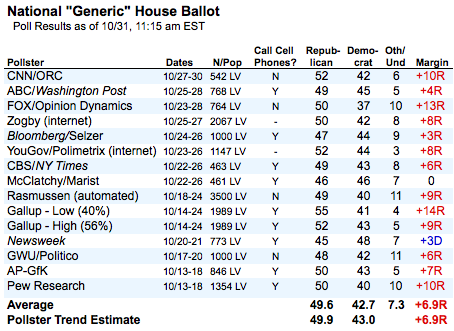I do not think I am the last one with faith in my American brothers and sisters. Between now and 7:00 PM on Tuesday November 2nd, 2010 I will be reminding our fellow citizens of what is at stake.
Let me be clear, losing the House and/or Senate will not destroy our country. It will however move us that much further away from bringing this country back for the middleclass. It is a shame that in case of that eventuality, the middleclass will have to lose that much more of their wealth and income as well as having to watch many more jobs leave the US as protection for our home grown job creation is eroded by the corporatists in the Republican party.
So we should not despair. Fight to stem the GOP wave caused by the best misinformation engine America has ever seen. If by chance we are unsuccessful, we lick our wounds and restart the fight at 7:00 AM November 3rd, 2010. The country is worth that much.
—–
My Book: As I See It: Class Warfare The Only Resort To Right Wing Doom
Book’s Webpage: http://books.egbertowillies.com – Twitter: http://twitter.com/egbertowillies
WASHINGTON – Readers of The Washington Post woke this morning to the headline "GOP HOLDS EDGE AT FINISH" splashed across its front page. An above-the-fold graphic, under the heading "Republicans keep a slight advantage," illustrated results from the latest Washington Post/ABC News poll showing likely voters favoring the Republican candidate in their Congressional district over the Democrat by a four point margin (49% to 45%).
No one should quarrel with the lead of the Post story (which has a different online headline): Based on all available evidence, Republicans do "appear poised to capture control of the House and are likely to make substantial gains in the Senate," a point also stressed in the ABC News analysis of the same poll. What Post readers may miss, however, is the subtext of two important words in the headlines: "edge" and "slight."
A four-point Republican margin on what is known among pollsters as the "generic" House ballot, is closer than what most other recent national polls have been showing (at least as of this writing), particularly those from Gallup, Rasmussen Reports, Fox News and others showing outsized Republican leads. Another new CNN poll released just just this morning shows Republicans leading by seven (52% to 45%). Of course, the Post/ABC poll is just one estimate with a margin of error — random change alone might have produced a wider or narrower Republican lead had they conducted multiple polls using the same methods.
But that said, a four-point Republican margin would suggest the Republicans winning control of the House but by narrower margins than the 50+ seat gains widely predicted in recent days. The statistical model of Emory University Professor Alan Abramowitz, presented at a recent conference of political scientists, shows that the difference between a tie on the generic congressional ballot and a ten-point Republican lead translates into a potential spread of Republican gains of between 40 and 57 seats (ignoring the margin of error for the model). If Republicans lead by 5 point in the generic ballot, the Abramowitz model predicts a 49-seat Republican gain. They need to pick up a net 39 seats to win majority control.
We will have many more new national generic ballot numbers to ponder over the next 24 to 48 hours, but for now, consider the following table, which shows the most recent results reported by 13 different pollsters over the last few weeks. They show everything from a 3-point Democratic advantage (Newsweek) to a 14-point Republican landslide (Gallup’s 40% turnout scenario), and every one of these surveys is based on a sample of "likely voters." Our most recent generic House ballot trend estimate, based on all public polls, puts the Republican advantage at just under 7 points (49.9% to 42.7%):
Do Generic Polls Show GOP Lead Narrowing?
Viewers are encouraged to subscribe and join the conversation for more insightful commentary and to support progressive messages. Together, we can populate the internet with progressive messages that represent the true aspirations of most Americans.
